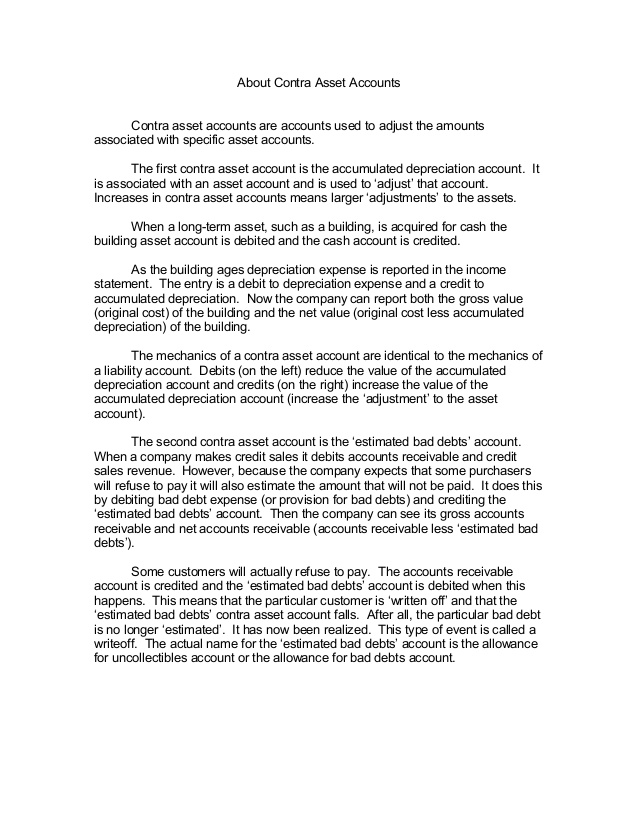
We’ll also provide a more detailed step-by-step explanation ofhow what is going concern to use the formula and discuss how to it within an Excel spreadsheet. If you left your money in that account for another year, you’ll earn $538.96 in interest in year two, for a total of $1,051.63 in interest over two years. You earn more in the second year because interest is calculated on the initial deposit plus the interest you earned in the first year. The investing information provided on this page is for educational purposes only.
NerdWallet, Inc. does not offer advisory or brokerage services, nor does it recommend or advise investors to buy or sell particular stocks, securities or other investments. NerdWallet, Inc. is an independent publisher and comparison service, not an investment advisor. Its articles, interactive tools and other content are provided to you for free, as self-help tools and for informational purposes only. NerdWallet does not and cannot guarantee the accuracy or applicability of any information in regard to your individual circumstances.
You’re our first priority.Every time.
This article about the compound interest formula has expanded and evolved based upon your requests for adapted formulae andexamples. I’ve received a lot of requests over the years to provide a formula for compound interest with monthly contributions. This formula is useful if you want to work backwards and calculate how journal entries for the imprest petty cash system are recorded how much your starting balance would need to be in order to achieve a future monetary value. This formula can help you work out the yearly interest rate you’re getting on your savings, investment or loan.

How do compounding intervals affect interest earned?
Beginning Account Balance – The money you already have saved that will be applied toward your savings goal. By using the Compound Interest Calculator, you can compare two completely different investments. However, it is important to understand the effects of changing just one variable. Our investment balance after 10 years therefore works out at $20,720.91. I think it’s worth taking a moment to mention the monetary gain that interest compounding can offer. Within the first set of brackets, you need to do the division top 74 mental health startups first and then the addition (division and multiplication should be carried out before addition and subtraction).
- However, it is important to understand the effects of changing just one variable.
- I created the calculator below to show you the formula and resulting accrued investment/loan value (A) for the figures that you enter.
- This example shows monthly compounding (12 compounds per year) with a 5% interest rate.
Investment returns are typically shown at an annual rate of return. Start by multiply your initial balance by one plus the annual interest rate (expressed as a decimal) divided by the number of compounds per year. Next, raise the result to the power of the number of compounds per year multiplied by the number of years. Subtract the initial balancefrom the result if you want to see only the interest earned.
This variation of the formula works for calculating time (t), by using natural logarithms. You can use it to calculatehow long it might take you to reach your savings target, based upon an initial balance and interest rate. Youcan see how this formula was worked out by reading this explanation on algebra.com. In reality, investment returns will vary year to year and even day to day. In the short term, riskier investments such as stocks or stock mutual funds may lose value. But over a long time horizon, history shows that a diversified growth portfolio can return an average of 6% annually.
Compounding investment returns
Interest Earned – How much interest was earned over the number of years to grow. Compound interest has dramatic positive effects on savings and investments. Expectancy Wealth Planning will show you how to create a financial roadmap for the rest of your life and give you all of the tools you need to follow it. Calculate percentage additions and deductions with our handy calculator.
Examples are hypothetical, and we encourage you to seek personalized advice from qualified professionals regarding specific investment issues. Our estimates are based on past market performance, and past performance is not a guarantee of future performance. Annual Interest Rate (ROI) – The annual percentage interest rate your money earns if deposited. The easiest way to take advantage of compound interest is to start saving! Just enter your beginning balance, the regular deposit amount at any specified interval, the interest rate, compounding interval, and the number of years you expect to allow your investment to grow. Looking back at our example, with simple interest (no compounding), your investment balanceat the end of the term would be $13,000, with $3,000 interest.
For longer-term savings, there are better places than savings accounts to store your money, including Roth or traditional IRAs and CDs. Compound interest occurs when interest is added to the original deposit – or principal – which results in interest earning interest. Financial institutions often offer compound interest on deposits, compounding on a regular basis – usually monthly or annually.
If an amount of $5,000 is deposited into a savings account at an annual interest rate of 3%, compounded monthly, with additional deposits of $100 per month(made at the end of each month). The value of the investment after 10 years can be calculated as follows… If an amount of $10,000 is deposited into a savings account at an annual interest rate of 3%, compounded monthly, the value of the investment after 10 years can be calculated as follows… Let’s take a look at how we put these into our formula… Savings account APYs are subject to change at any time.


